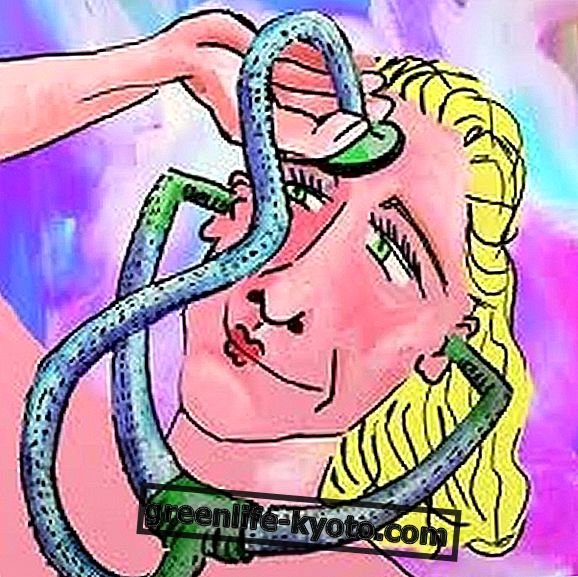
The human being has the innate tendency to follow patterns that reassure him even before satisfying the need to express his individuality .
The need to transgress and break the patterns derives precisely from the fact that no scheme is made to satisfy human nature in its entirety, but only in part, and that a healthy and conscious exploration, done with respect for oneself and others, is what would appear to be the most natural thing.
Life itself does nothing but explore new possibilities, and this possibility has been guaranteed by creating an instrument such as evolution in which, although there are repeated patterns, they are all partial, temporary and always improved.
In nature, nothing is "moral". This also makes sense when analyzing the sexual sphere, where alongside a few great classic established and often blindly accepted patterns of behavior, there are thousands of transgressions, escape routes and loopholes, which in hindsight, like the same established behaviors they flee from, they never really satisfy .
Neither morality nor immorality, in fact, represent the ideal and complete nature, just as neither monogamy nor polygamy seem to have full success in this field. Where is this behavior known as "polyamory" placed in all this?
Monogamy
Monogamy has for some centuries been the most commonly practiced and accepted model of emotional and sexual relationship, even speaking in legislative terms.
According to this model, you must have only one partner to whom you reserve all the love, care and attention by creating a family model based on a mother and a father.
It is an apparently functional model, as it gives stability, but, taking a look at the numbers, we will discover that the cases of betrayal and those of divorce (a quasi-polygamy made by jumping from one marriage to another) now concern almost the majority. part of weddings.
Polygamy
Polygamy has been the prevailing model in the past and is still legal in some states. It exists mainly in the animal world, even in animals from which Homo sapiens originated.
It differs in polyandry, a female with more male partners (in some African countries and in the Amazon) and in polygynia, where on the contrary the male has more companions (in some Islamic countries).
The model often works in a hierarchical and asymmetrical way, where only one of the two sexes has the freedom to enjoy the advantages of sexual freedom.
Promiscuity
A third model could be the so-called promiscuity, where people need total freedom to be happy and satisfied.
Today we would call them open relationships : they also exist in nature, as in the case of "bonobos", which use open sex as a tool for the cohesion of the herds.
It is a model experimented in the communes of the Sixties and Seventies, where there was no sense of ownership. Often, however, this model led to a decline in responsibility, to a dis-respect of the feelings of others, focusing only on individual desires.
polyamory
What is now called polyamory is instead an open and responsible behavior at the same time, because it is more aware.
It is not based on a precise scheme because each individual, when he reaches a certain level of psychological maturity, is a unique case .
"Maturity" is exactly the element at the basis of polyamory, since it works only if they are present:
> Honesty and transparency
The partners involved are all aware of each other's choices, nothing is hidden or lived clandestinely, so as to always give the freedom of choice to each of the individuals. Not only in sexual terms but also in sentimental terms.
> Respect for feelings
Unlike promiscuity in polyamory, feelings prevail over desires and sex has no mere recreational aspect. In function of this, to maintain healthy relationships we tend to respect our feelings, both of our own and those of others, seeking harmony between the two.
Fidelity and sexual exclusivity are not synonymous, and instead of venting one's rerepsion, it is possible to live a non-monogamous life in a responsible and mature way .
> Mature dialogue
The main means of expressing and achieving transparency, honesty and respect is the mature dialogue, in which we try to listen and express ourselves in an assertive way, without judgment, responsibly. Consensuality is always the key element, like the awareness that the human being is dynamic and changing, as well as his interpersonal relationships should be.
> Non-possessiveness
The polyamory begins above all where the possessiveness ends, the sense of ownership of the parntner and the childish claim to be able to completely satisfy all the psychological, emotional and sexual needs of a person.
There are already accepted forms of polyamory: that of a parent for children. He loves them all, each in a unique way, and never ceases to love one when he dedicates himself to the other.
Freedom is not something that can be granted, it is a right of the soul, even the freedom, eventually, to love one person. But it must be precisely a free and non-possessive choice, not dictated by ethical and cultural mainstream.
> Child management
In many relationships and in ancient polyamorous cultures the children came and still grew up as brothers, where everyone takes care of them in different degrees : their education and care are not strict responsibility of the parents, a bit like it still happens in certain tribe and in the realities of the villages.













